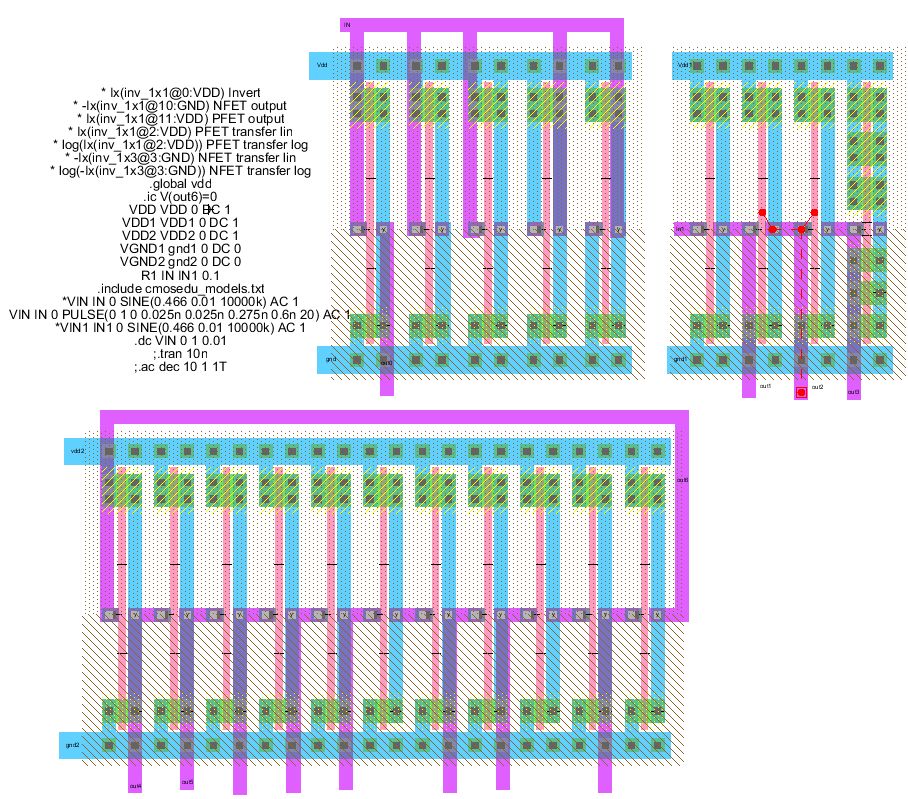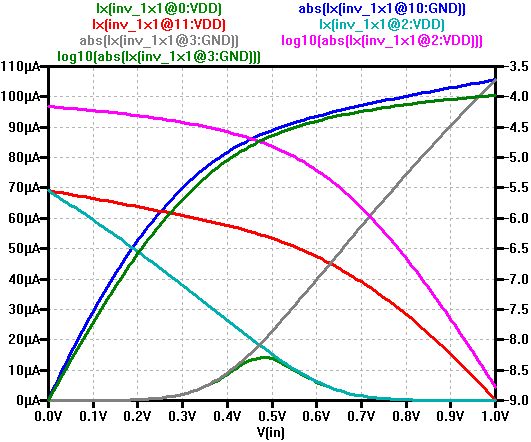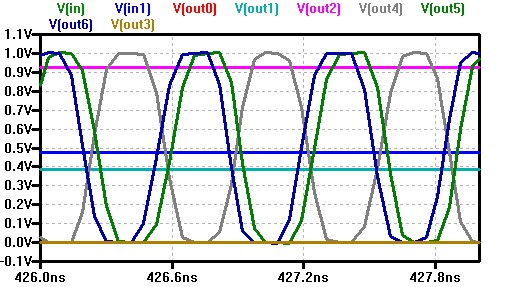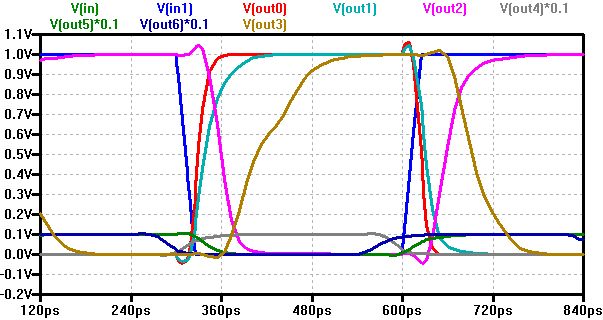Performance Circuit: Inverter and Ring Oscillator
|
 |
Library: Lab05_2024.jelib
Link: Lab05_2024.jelib
Cell: 'Performance' for .AC and .TRAN ring oscillator and delay simulation
Cell: 'PerformanceDC' for .DC simulation
- Static IV output curves with an Inverter
VDDmax, IDSN, IDSP, λ - Inverter chain
- Ring oscillator
- Variation of number of unit transistor: mN, mP, sN, sP
m number of transistors in parallel (LTSPICE parameter)
s number of transistors in series - Simulate the circuits, extract parameters and modify WN, WP for optimum performance
Electrical parameters: VDDmax, (IDSmax), Ioff, Ron, Cox
Performance parameters: tdelay, fCLKmax, gain, ft
Most of the time MOSFETs are not available for measurement, therefore an inverter is used.
The input is fixed at VDD or gnd. With a load NFET or PFET current is measured for the output curve.
The inverter Vout, Iout versus Vin curve gives the threshold voltage Vthn, Vthp and the β (KP, KN).
An Inverter chain gives the propagation delay per stage.
t = 0.7 * R * C
The average power consumption for full charging should be:
Pavg = V * I = V * C * V * f
Changing the load 1,2,3 inverters, changes C while keeping R constant.



